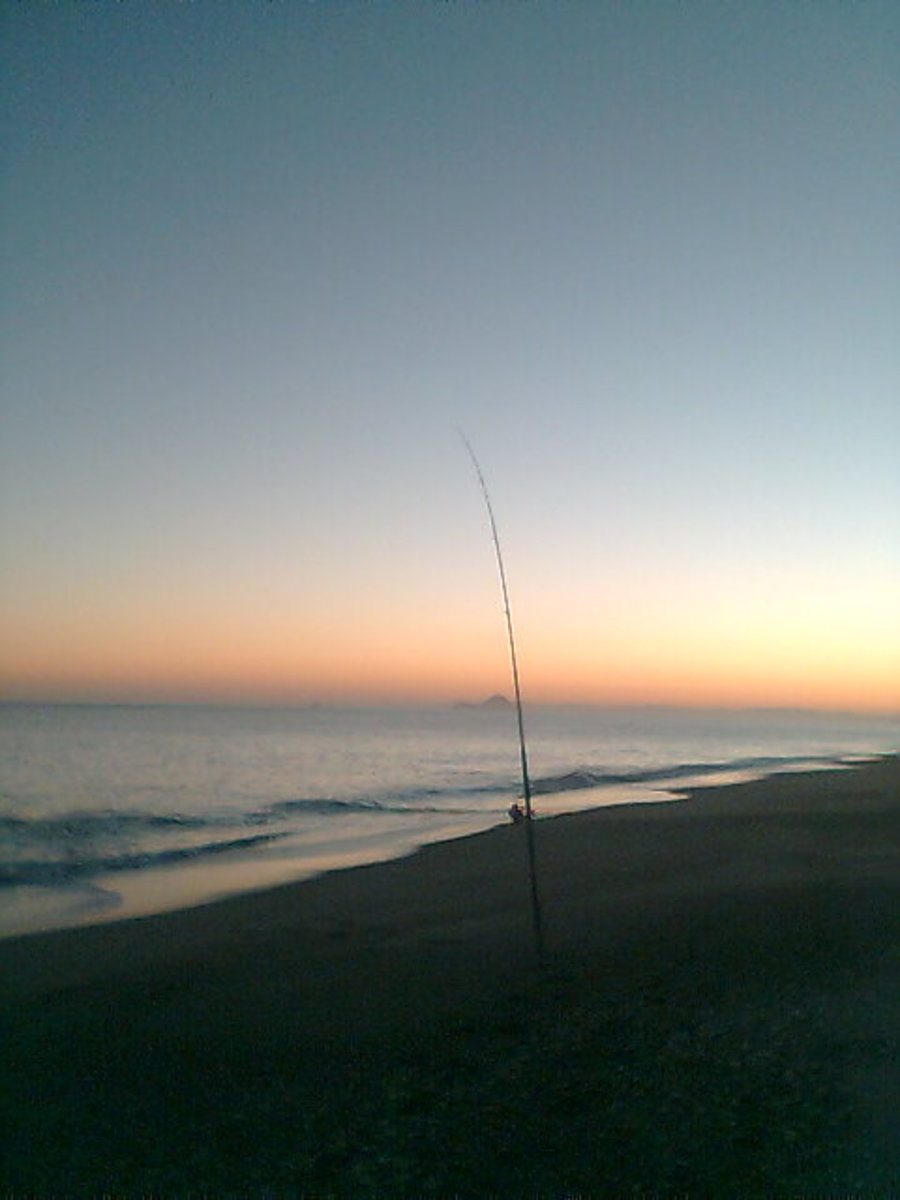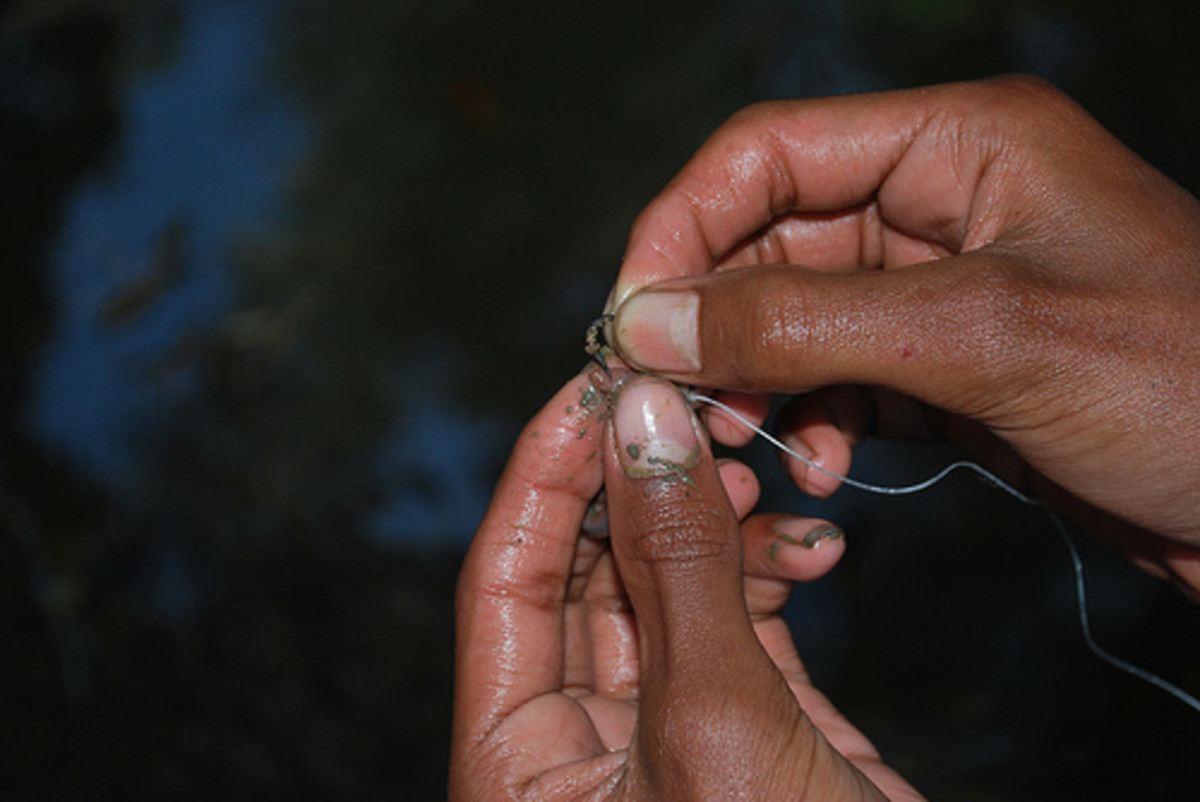Catch Your own Bait Buddy! Part Two
At the Beach
It does not matter if you are fishing in salt or freshwater, with the right tools or a little innovation, you can catch your own bait. You will be surprised how much money you will save! I have found there is a lot opportunities on the beach and in the surf that is often overlooked to collect bait or seafood.
I will start with what they call Sand Fleas, in the Southern Coastal States. It is not a flea at all but a type of crab. When I grew up in Southern California, it was quite common in most beaches. When I moved to the Atlantic Ocean, I was at first confused by what was being called sand fleas. To me, a sand flea was just that, a flea that lived in the sand in probably every beach in the world. Then, I became amused when I found out that a lot of fishermen would use a specialized rake to collect them!
First, let me explain to the uninformed, that these sea creatures come to shore on waves and then burial into the wet sand. They create a small hole in the sand that is easy to detect. Why do I think it is strange to use a rake? Because, as a kid, all we would haft to do is locate the mound and then dig down in the sand with are bare hands since the crabs are harmless, so a rake seems like overkill.
This bait is a favorite of surf fish in both the Pacific and Atlantic Ocean. All you need is small container that is somewhat waterproof, a small sand bucket will work find. Just keep the sand moist with salt water and be aware that the sand crabs will not live very long. Sometimes you will find them frozen in stores, but I have not had any success with them. I would very seldom use them after they die, because they go bad rather quickly.
Another thing to be aware of, is that you do not want to hook them though the body, for they tear apart easily. Always hook them though the top shell. A large crab is less than two inches long, so a large hook is not necessary. In fact, for large crabs I would never use anything larger than a size two hook. I prefer circle hooks, but a traditional live bait hook will work find. A lot of fishermen fish them on a rig with the weight on the bottom, preferable a pyramid weight. I have also used a sliding sinker, with about a foot long lead. Weights very depending on how strong the current is, but I normally will use at least a two oz. weight.
Next, I will talk about another small crab, the Fiddler Crab. You can find it in beaches both in the Pacific and Atlantic. There is different methods used to catch them depending on were you find them. No mater if it is by piers, in rocky areas, sandy beaches or mud flats, the best time is always low tide. This is when they are most vulnerable. In fact, for locating any land crab or shellfish, low tide is the time to do it.
When I lived in Myrtle Beach, South Carolina, there was a saltwater lake close by. It was called The Swash and was a hot spot for all kinds of bait. During low tide, I would go there with a large metal spoon and bucket, for this was a haven for Fiddler Crab. They would nest in the mud and you would see them waving there one large claw close to the opening to there home. The males do this to get attention from the females and to defend there territory.
They were easy pickings, all you had to do is slash though the mud wearing a pair of hip waiters, then when they dart into there hole, dig them out. It did not take long.
Another method is to find an area close to were they are at low tide on the beach, most of the time around jetties. Dig a hole deep enough to put a bucket any size you desire into, with the mouth level with the sand. Smooth the sand down around the mouth. Then, you heard the crabs into the bucket. It takes some planning, but can be very effective. If the beach is rocky, you can find the crabs under palm size rocks. You got to be fast and dip net will help. Do not worry about there claws, they are too small to hurt you.
When fishing for Sheep Head, I will fish them right next to the pilings were they hang out. I normally hook the crab right under the smaller claw and pierce though to the other side. I will use either a size eight or size six “J” hook. Then I use just enough spit shots to get me to the bottom and keep me close to the piling. If you do not want to use spit shots, you can use a sliding sinker, no heaver than one ounce. Either uses a spit shot or a barrel swivel, placed about a foot away from the bait. Another thing, always hold your rod because Sheep Head are experts at stealing bait.
Next, let us talk about shellfish. As far as for bait, Mussels are probably my favorite. They are kind of a bitch to keep on the hook; however, I have a method that has become my secret weapon for surf fish.
Mussels, was my “go to” bait when I lived on the Pacific and yet, they do not seem too plentiful in the Atlantic. This is a shame because all kind of fish will take them. In the Pacific Ocean, you can find them on the large rock formations and pilings on docks and piers. I will use a small sand shovel or some other tool to pry them loose.
Now for my next trick, I will tie on a snap swivel, select whatever size of weight that will keep the bait on the bottom, hook it to the swivel. Take three sizes eight or size ten hooks on a leader and add them to the snap, then close the snap securely.
I will now carefully open the mussel with a knife. I stress the word carefully , because the shell is easy to break, and it will not be as affective. When you open the shell, work the knife around the outer part of the meat, just enough to loosen it. Finley, take your rig, keeping the weight behind the shell and securing the hooks one in the middle and the other two on ether side of the shell. This rig is best to be fished in sheltered water because it is fragile ! Presenting the bait in this manor will most definitely induce strikes if fished around rocks or docks were mussels live!
Clams are also a killer bait that can be fished using the same tactic discussed above. Once again, the time to find them is at low tide. You actually follow there “tracks” that they leave when they inch there way across the newly exposed sand. They then produces a small mound when they cover them self’s. All you need to do now is dig them out! I almost forgot two other baits you can find on the beach. One is the pile worm which you can find some times in rotting wood, like an old dock. Sometimes they will be under rocks around jetties. You must be careful, though, they do bite!
Another favorite bait of mine found on beaches in California, is the ghost shrimp that can be found under rocks at the waters edge. They are almost transparent, with two claws that make them look like an Albino crayfish. They are sometimes hard to find but it is well worth it, fish love them! On my other related hub, I discuss freshwater bait check that out as well!



